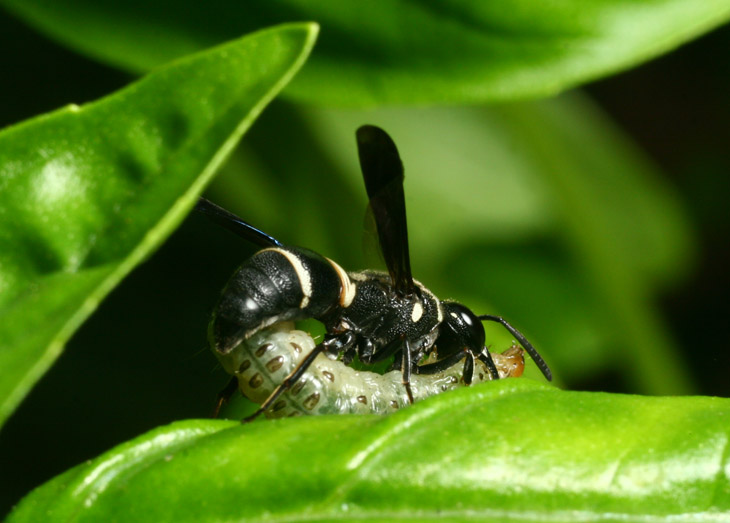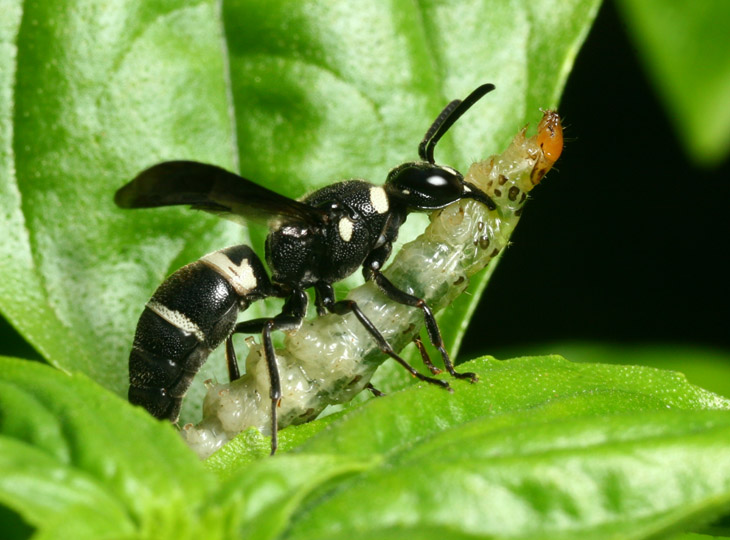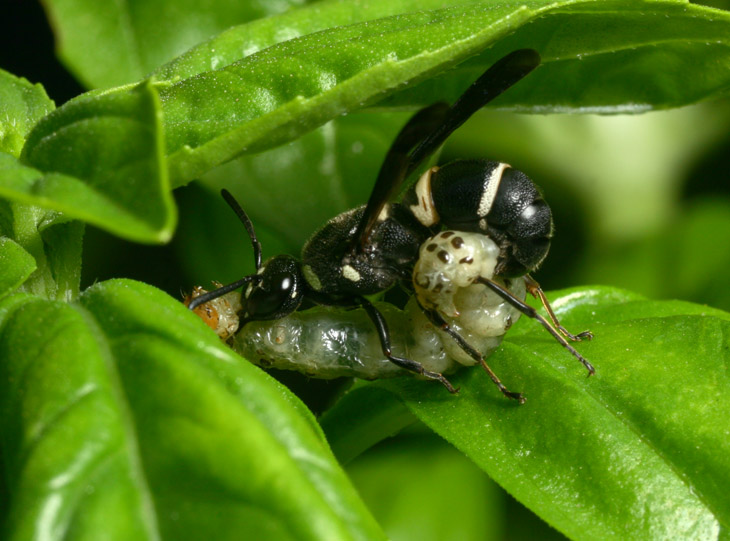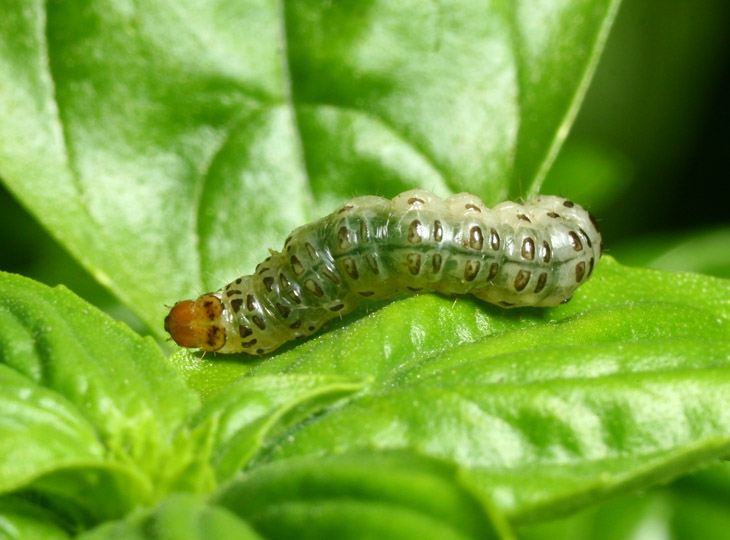I actually had a little time to do some shooting today, and was lucky enough to find a few subjects. More will be along later when I have more time to post about them, but for now we’ll cover a brief but dramatic saga.
As I passed a potted basil plant without the camera in hand, I saw a small black and white wasp traipsing across the leaves, which is not uncommon, but as I looked closer I could see it was burdened with a larva of some kind, and not its own. Realizing that it was probably futile, I dashed inside and got the camera in hand, fresh batteries in the flash and everything. Luck was with me on my return, since the wasp was still there. I figured there was a pretty good chance it would fly off with its prey, but I was going to give it a shot anyway.

It’s likely that the caterpillar was going to serve as food for the wasp’s young’uns, since that’s a common trait among many species of Vespidae, but instead of flying off bearing this new meal, the wasp was carrying it around on the basil leaf, sometimes on top, sometimes on the underside, seeming unable to determine where it wanted to be. I kept shifting to try and maintain a good vantage, but then the wasp cooperated and halted on top of the leaf in good sight. The caterpillar, it must be said, wasn’t putting up any fight at all, and could have been dead for all the movement it demonstrated.

I spent a bit of time trying to identify the wasp, with only moderate luck. I’m fairly certain it’s a potter or mason wasp, of the genus Eumeninae, but pinning down the exact species hasn’t happened yet. Here’s an example passage from a biological key that allows precise identification:
Metasomal tergum 1 with short overhang, the space below not serving as acarinarium (mites never present); base of tergum 2 usually with a row of shallow to deep pits
That’s just for one particular species. Even if I look up all of the terms that I’m not familiar with, there’s a good chance none of my images show the necessary details. Entomologists collect their species, while more often than not I’m shooting them “in the wild,” usually without native trackers or guards or anything; yeah I’m that badass. But it often means that key features simply never get captured in images.
Notably, the wasp paused a couple of times and jabbed the caterpillar vigorously with the end of its abdomen; while it might have been stinging it into submission, I think it’s far more likely that it was instead laying eggs within the body cavity of the larva. This is, after all, how caterpillars serve as food for the wasp larva. The wasp will then carry it off to its mud cocoon and seal it within, where sometime later the young, having consumed the paralyzed caterpillar (or spider, another frequent prey of some species,) will dig out of the dried mud and fly off. Meanwhile, I got to watch the wasp going to town on the caterpillar like a Chihuahua with an Ugg boot.

And then – it just flew off, leaving the caterpillar behind. Not what I was expecting.

I waited a short while to see if either a) the wasp returned, perhaps after prepping an ideal spot, to carry the larva off again, or b) if the caterpillar would roust itself and go on about its business, unaware that something bad was brewing internally. When neither happened, I picked up the caterpillar and was rewarded with a defensive wiggle, showing it was still alive, so I put it back where it was and left it.
Hours later, it was still on the same leaf, though it appeared to have reversed position, and was now gaining the attention of some kind of predatory true bug. Curious now, I collected the caterpillar and placed it within a small terrarium with a few choice leaves to observe it over the next few days. I suspect it may sprout some cocoons on its back after a while, and so there might be another part of the saga coming along eventually. I know you’re on the edge of your seat.



















































